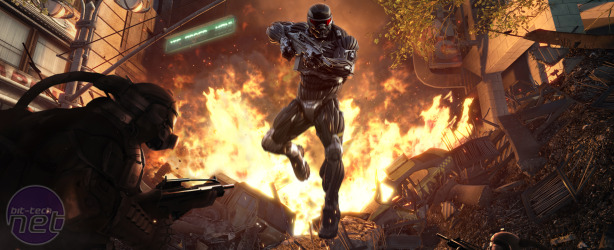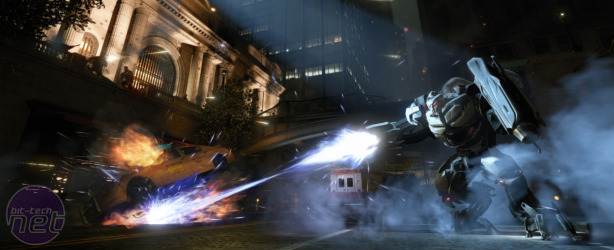
Crysis 2 Review
Publisher: Electronic ArtsPlatform: Xbox 360, PS3, PC
UK Price (as reviewed): £37.99 inc VAT
US Price (as reviewed): $56.99 ex tax
Crysis 2’s main character, Alcatraz, has a serious drinking problem. He’s not an alcoholic, if that’s what you’re thinking. Instead, the problem is that one sip of tequila is apparently enough to render him permanently incommunicado. Crysis 2 starts with Alcatraz on a submarine, blearily looking around at the other members of his squad and listening to how they’ve been tasked with rescuing one Dr Gould from a mysteriously diseased New York.
‘Alcatraz isn’t much for talking right now,’ one of your comrades awkwardly announces to the rest of the cabin. ‘He had a bit too much tequila last night.’
It’s the understatement of the century. Alcatraz must have been cutting his tequila with acid and lime, as that one binge has rendered him permanently mute.
Quite why Crytek chose to attract attention to your character’s silence in this way is confusing at first. If Alcatraz is capable of speech then why doesn’t he explain his situation to Gould when the two finally do cross paths? Why doesn’t he object when he’s mistaken for the enigmatic commander of the original game, Prophet, and hunted because of it?
The reason, simply, is that silent protagonists in sci-fi shooters are very fashionable at the moment. They have been ever since Valve first put a different mute in a different suit of high-tech armour and made him fight a different race of aliens of differently mysterious origins in a different ruined real-world city. Crysis 2 is nothing if not fashionable; different enough to stand out, but familiar enough that it fails to throw up any genuine surprises. Crysis 2’s core features trace their ancestry back to other titles, from the infuriating and nonsensical silence of the lead character in the singleplayer, through to the level-up system of the multiplayer.
This isn’t in itself a bad thing, however. Crysis 2 may build itself on the fashionable foundations laid by other titles, but it occasionally offers up some architectural flair of its own. Unlocking Prophet’s hidden flashbacks, for example, not only partially circumvents the problem of relating backstory to a silent protagonist, but is also interesting enough to make you want to search for collectibles.
The main plot is a different story though and isn’t hugely accessible for those who haven’t played the original game. A scrambled video intro paints a confusing picture of New York as a quarantined city overrun by a mysterious infection, with the rumour of alien invasion on everyone’s lips. Somehow though, official military organisations are utterly absent and only Crynet’s hermetically armoured soldiers remain; everyone but the figureheads in gas masks. Alien craft are regularly seen crashing in to skyscrapers, but your ill-fated squad still initially regard their mission as a training exercise.
It’s sad to see that Crytek hasn’t fulfilled promises it made regarding the choice of location too. When questioned by cynics and sceptics over why the action had moved from an actual jungle to a concrete one, Crytek’s recurring reason was that it wanted to give real impact to the story; to make the drama feel real by basing it in recognisable places.
In actual fact though, there’s limited evidence of this beyond a few token gestures. Instead, most of the firefights take place in nondescript alleys, skyscrapers and office buildings. No tragedy is presented as the Statue of Liberty burns and the script doesn’t summon grim resolve as characters rampage through Grand Central Station. Instead, the cast seem to disregard the ruined city for the most part, even as they pick their way through diseased inhabitants.
We, meanwhile, fall back to our original assumption; that the surrounding skyscrapers offer a convenient way to limit the view distance with minimal polygons.

MSI MPG Velox 100R Chassis Review
October 14 2021 | 15:04











Want to comment? Please log in.